There is always some action around the blackberry shrubs that grow along the dusty road that leads to my favorite beaches ...
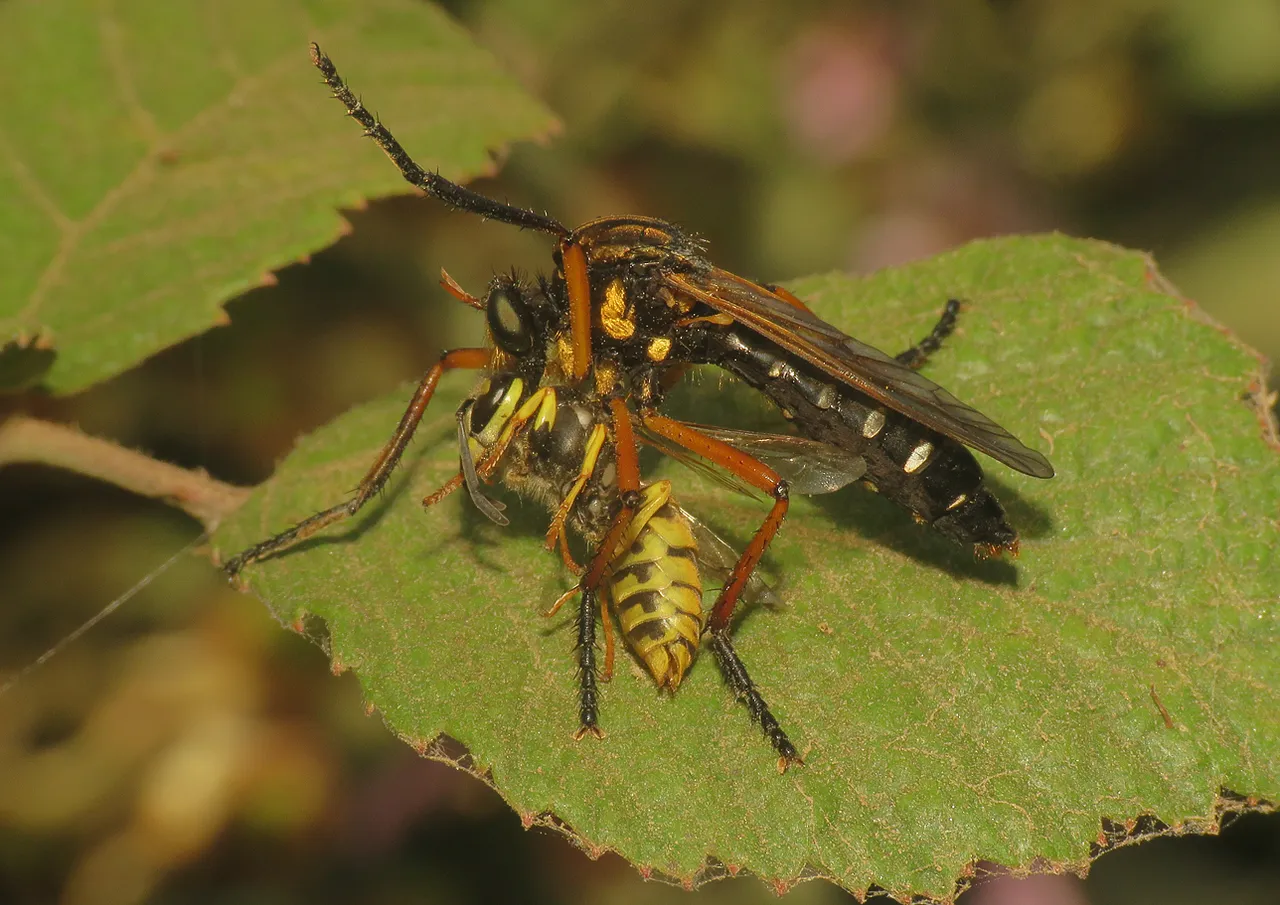
... especially in July ...
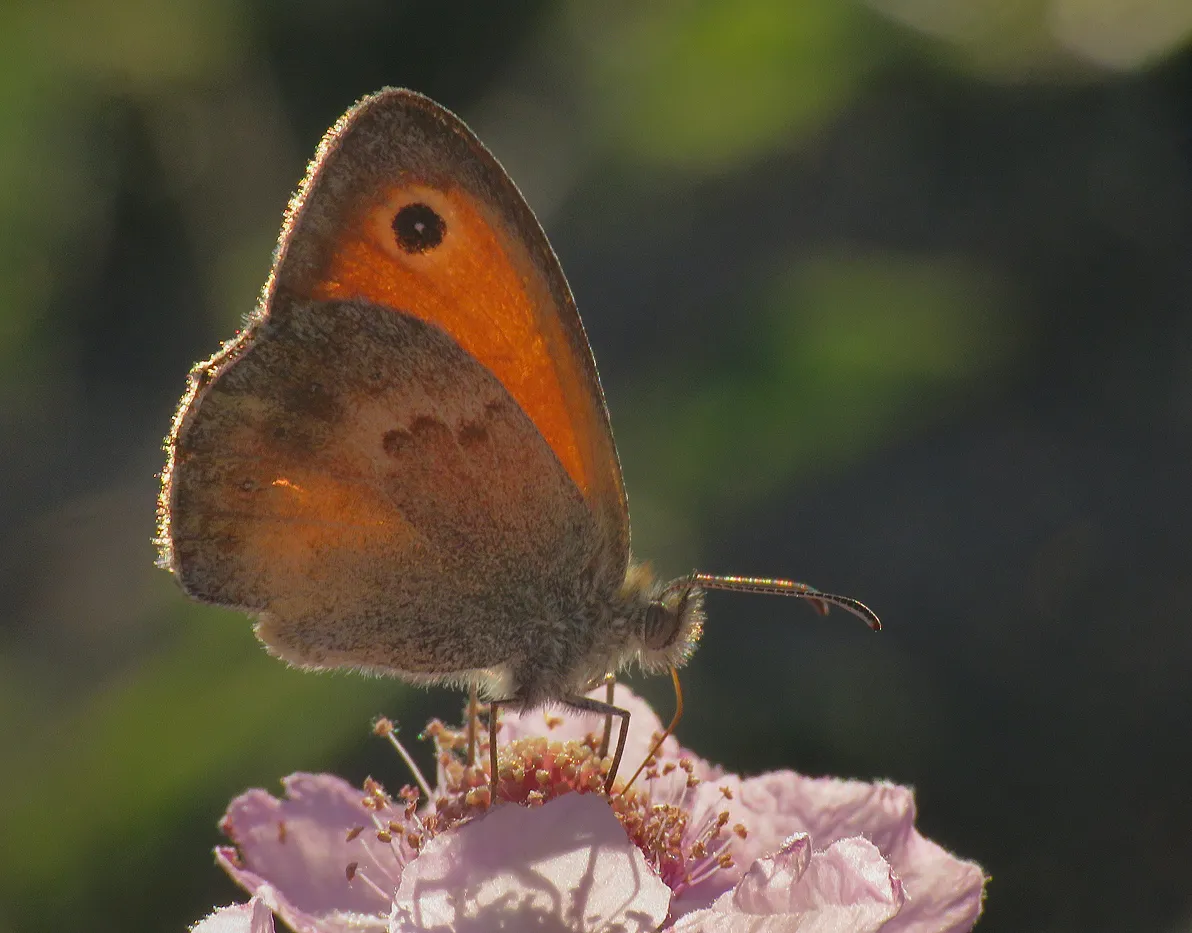
... when most of the thorny, tentacle-like branches are covered with flowers ...
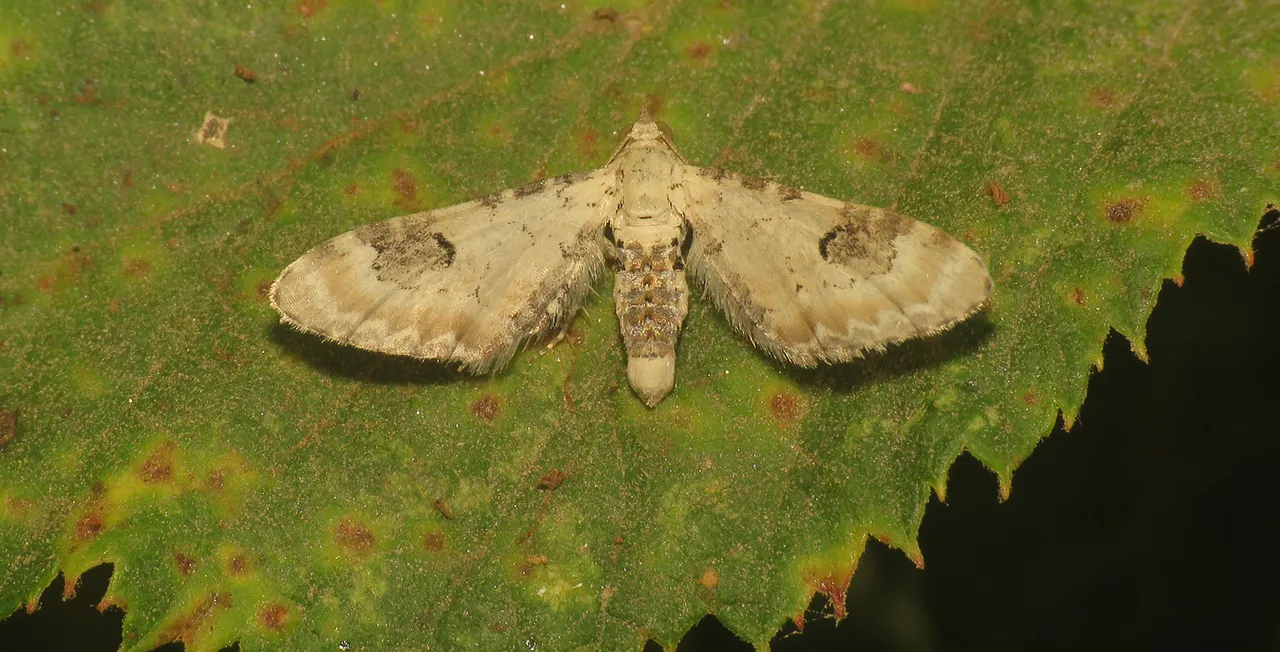
... and many insects gravitate around them in search of food and shelter.
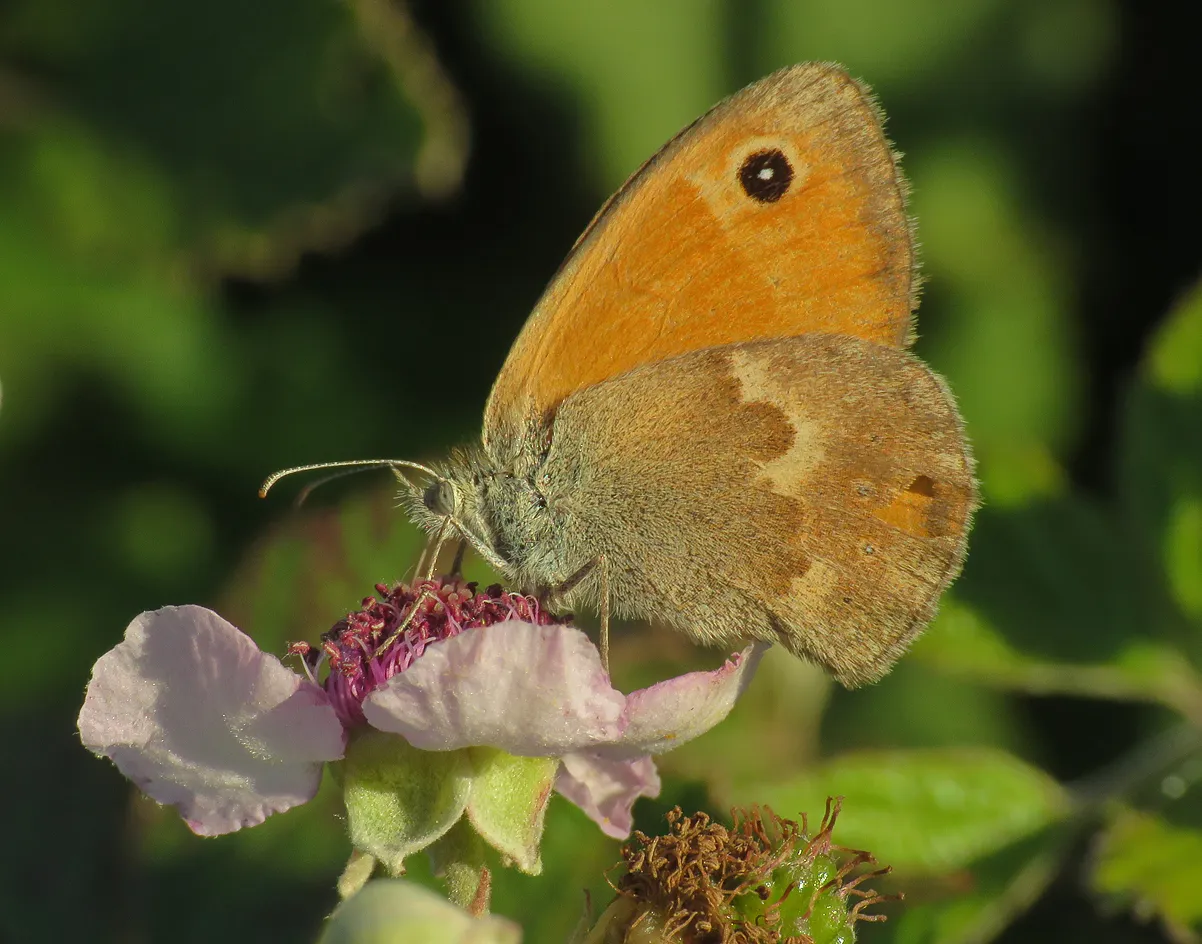
This small butterfly, the Coenonympha pamphilus, is here for the nectar.
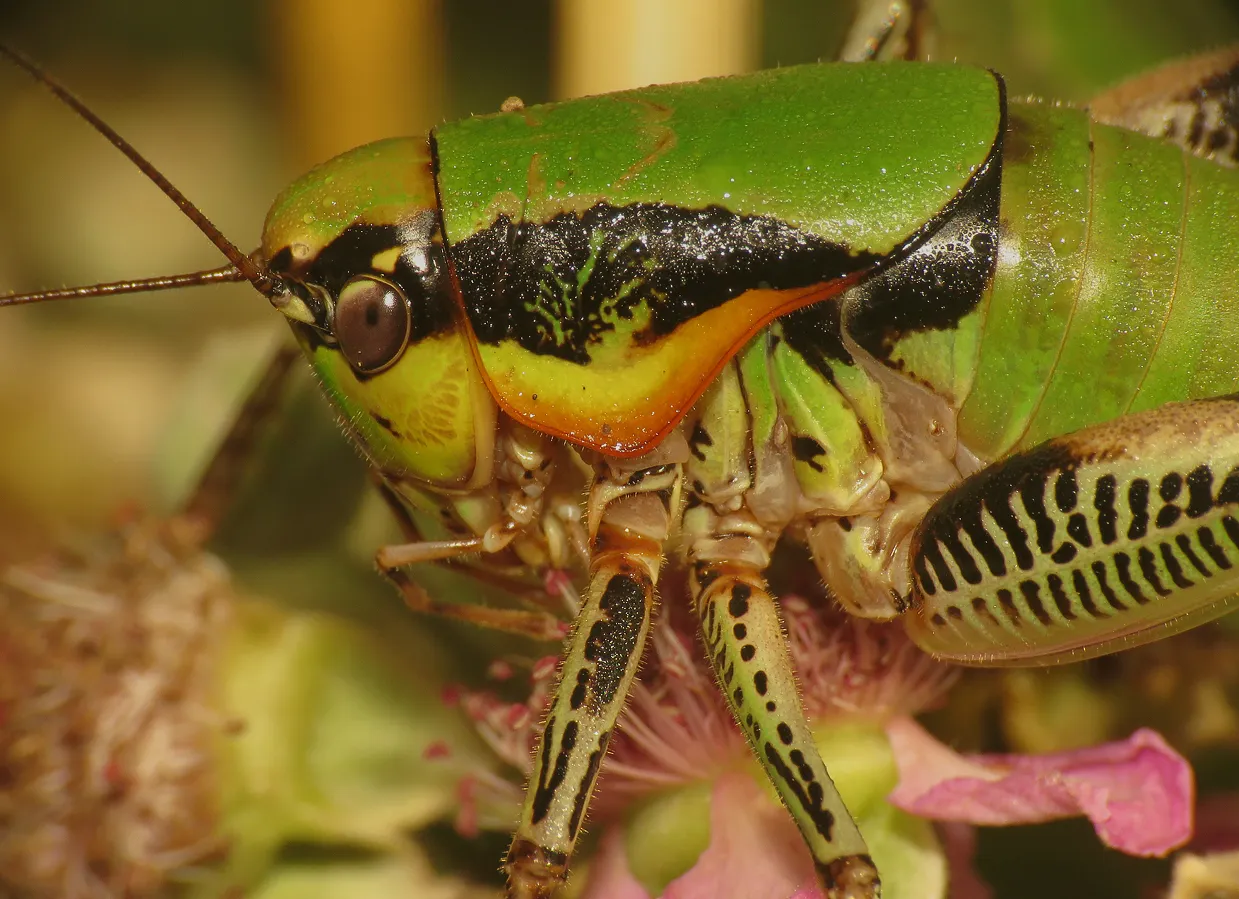
The Eupholidoptera schmidti bush - cricket feeds on flowers in a more destructive way, by chewing all the juicy parts.
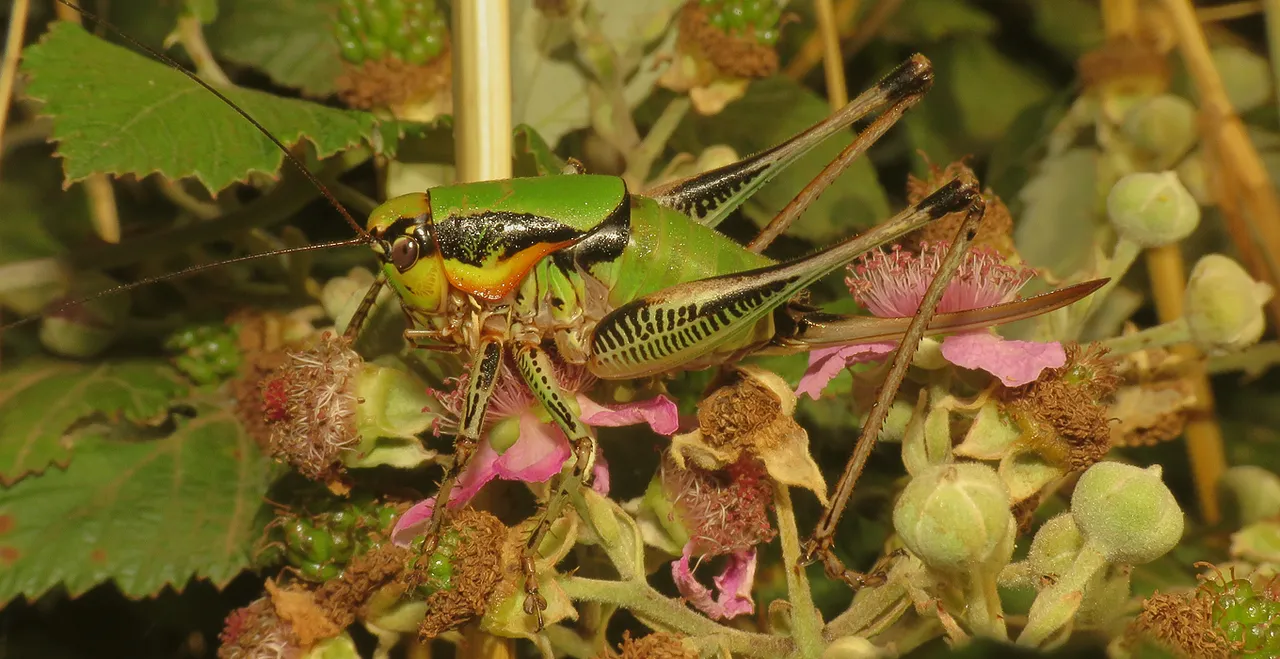
The cricket is well camouflaged in this environment ...

... but birds have excellent sight.
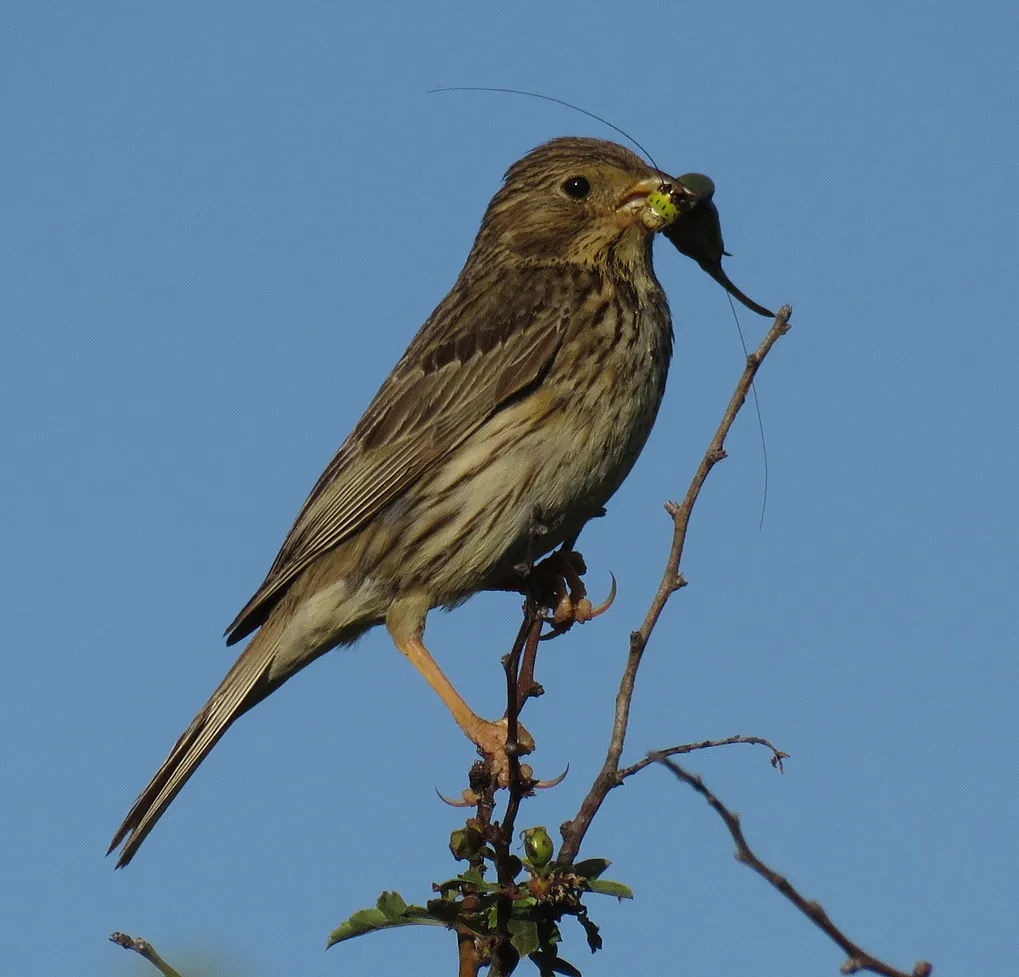
Here you can see the Mediterranean short-toed lark (Alaudala rufescens) with its prey - the Eupholidoptera schmidti. The bird removed the cricket's legs to make it more palatable and easy to swallow.
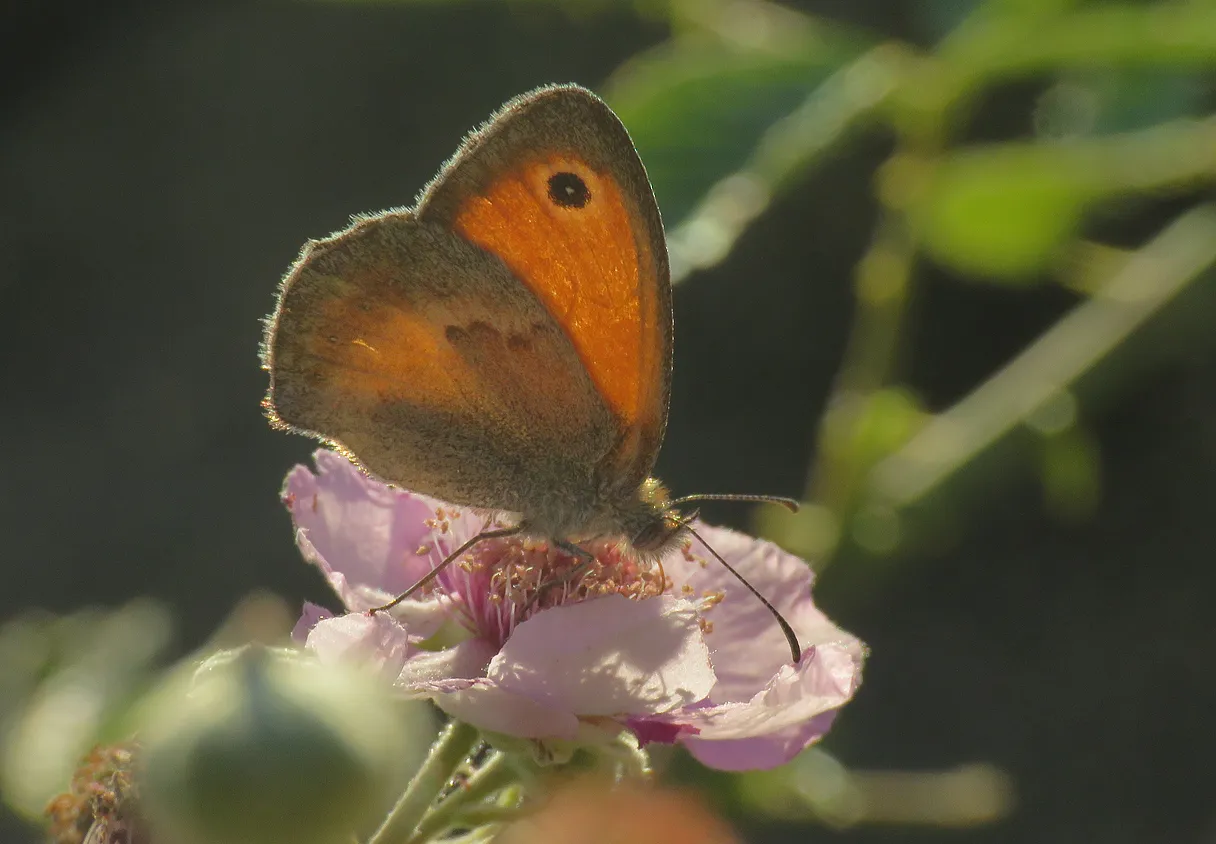
The flowers aren't the only attraction on these shrubs.
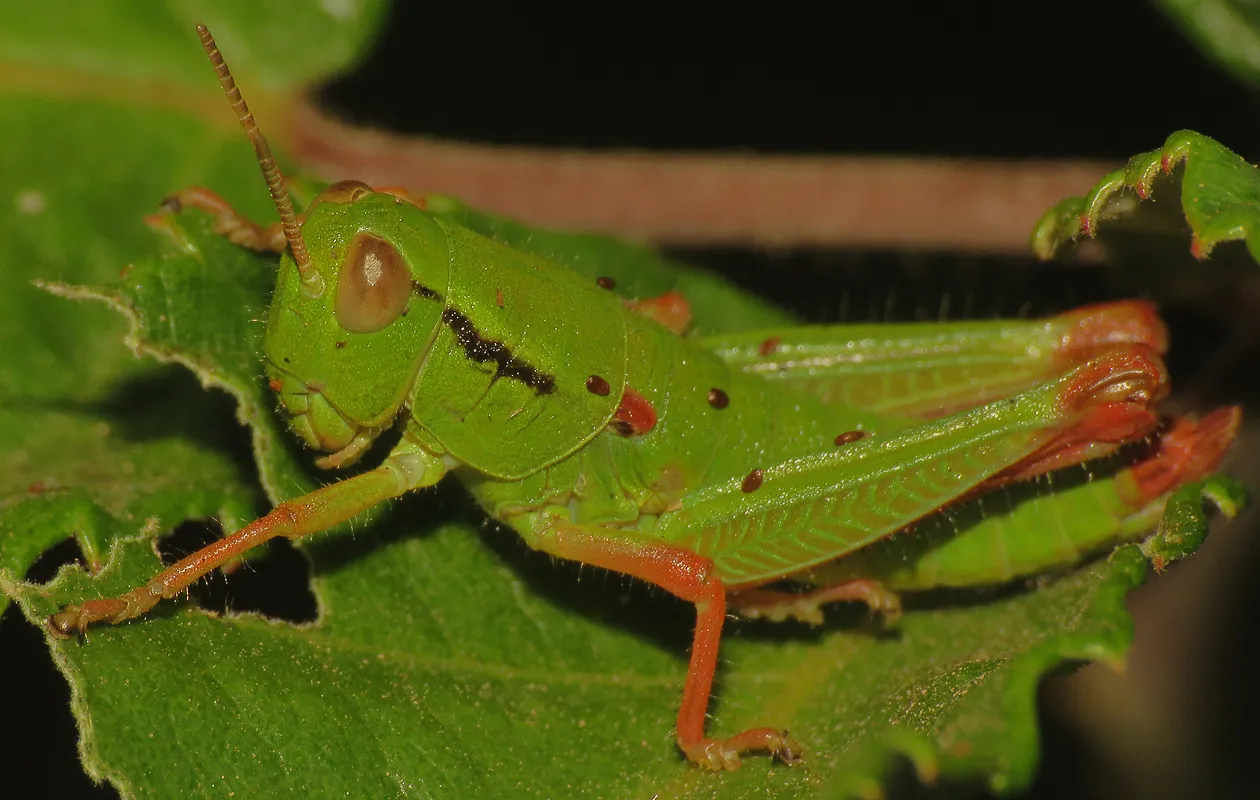
Quite a few species are here for the foliage.
The beautiful grasshopper in this photograph is chewing the fresh leaf.
This is a species (don't know which one exactly) from the Odontopodisma genus of the Acrididae family. It's pretty rare here in the areas around my hometown.
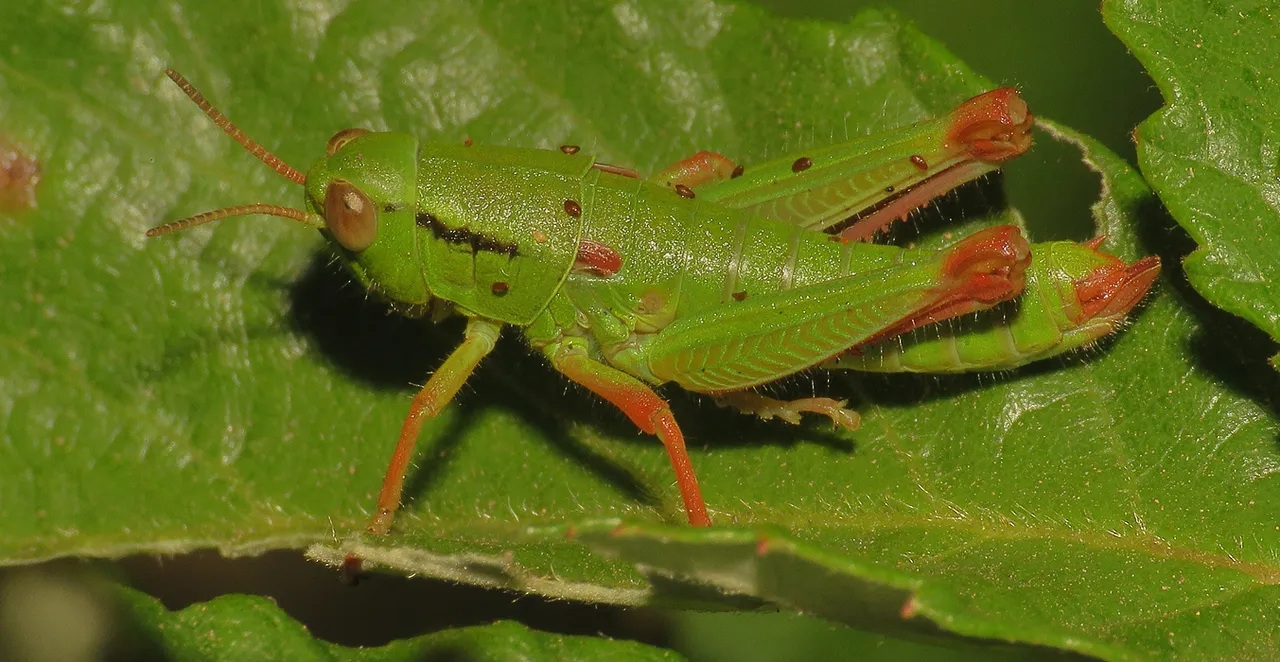
When still and quiet, the grasshopper is well hidden among the foliage.
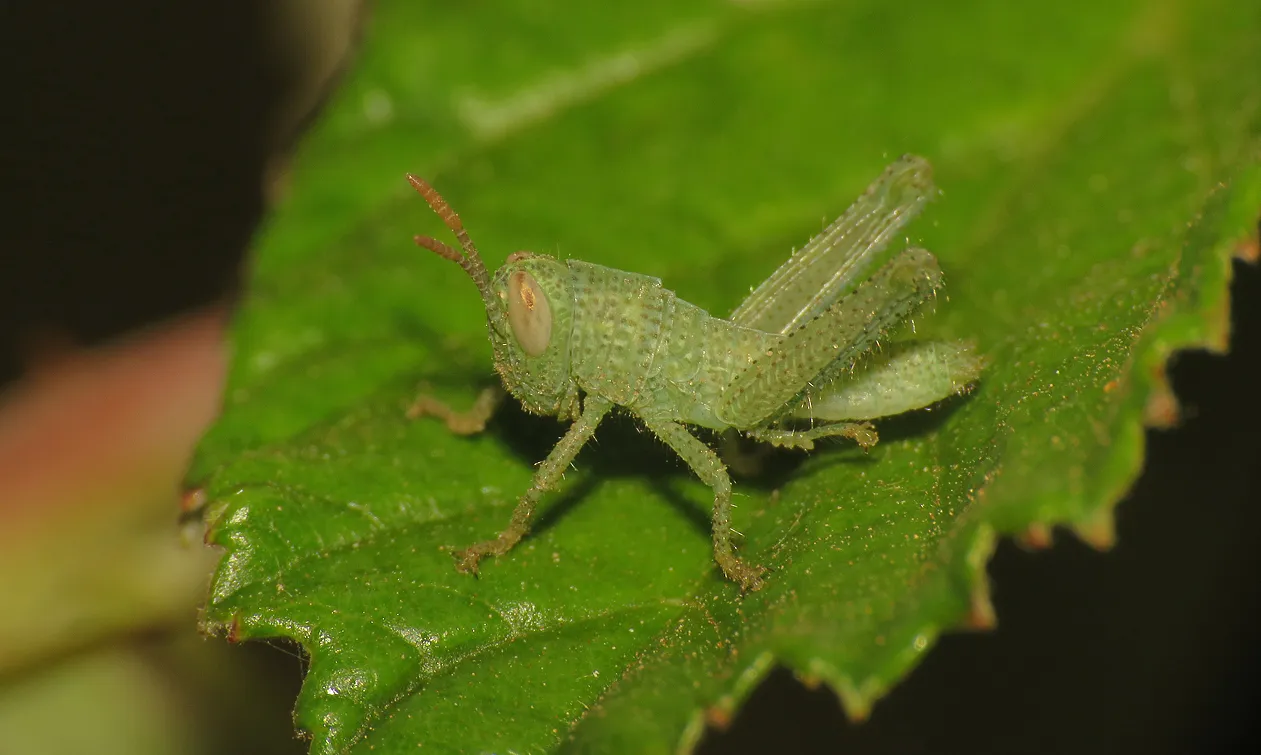
This is a small, very young nymph ...
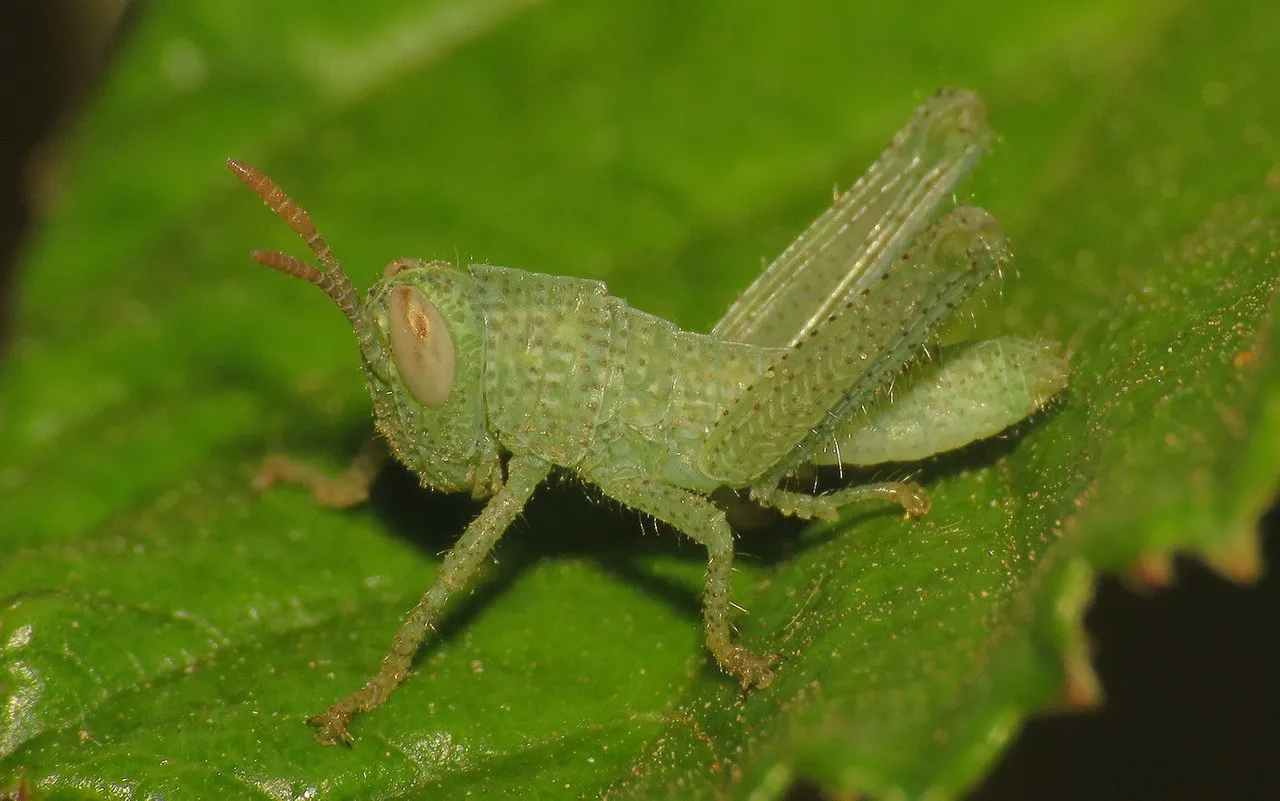
of the Anacridium aegyptium grasshopper. When it reaches adulthood, this is one of the biggest grasshopper species in the area.
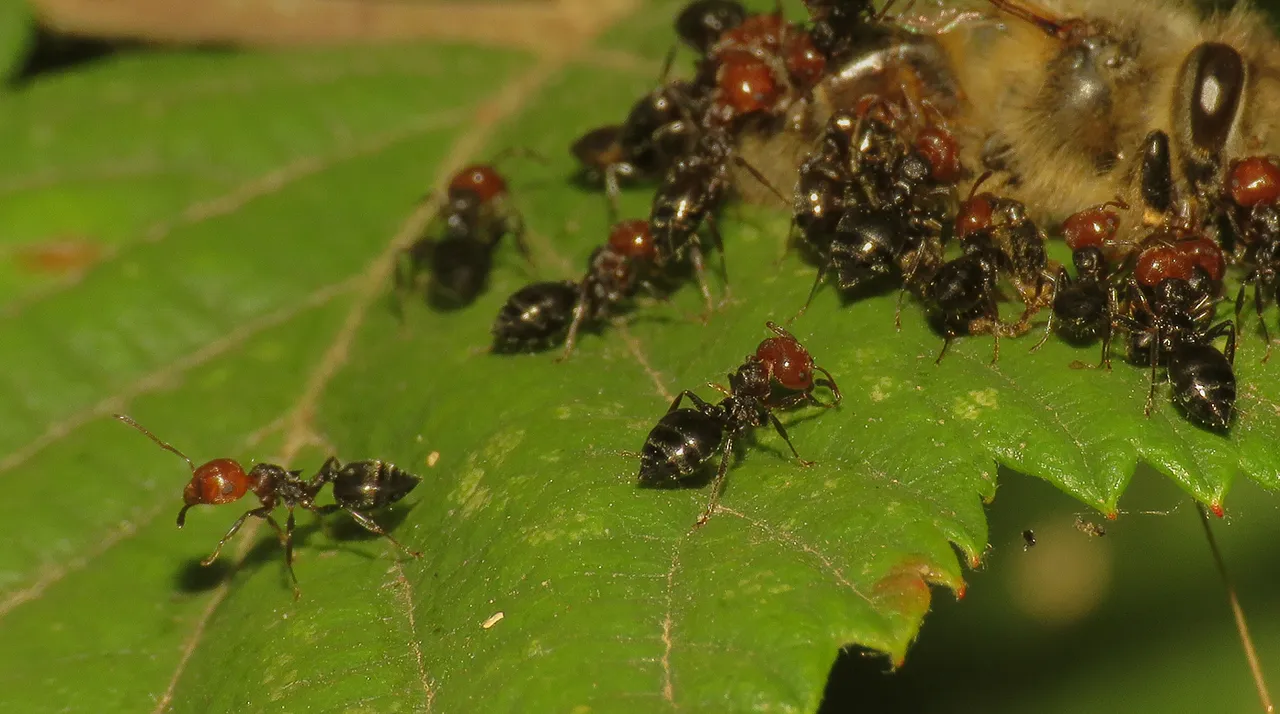
Various ants can be seen on the shrubs during the warm part of the year.

This group of Crematogaster scutellaris workers has come across a dead bee ...
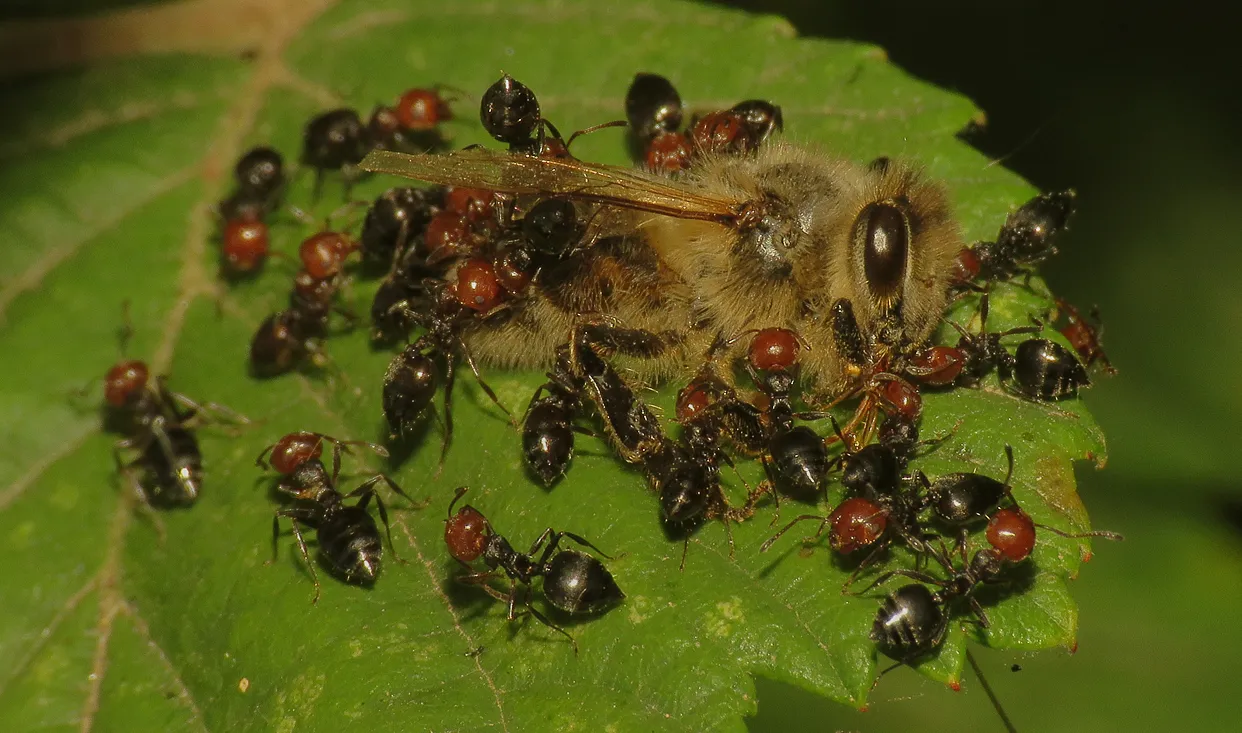
... and now it's busy dismantling the corpse.
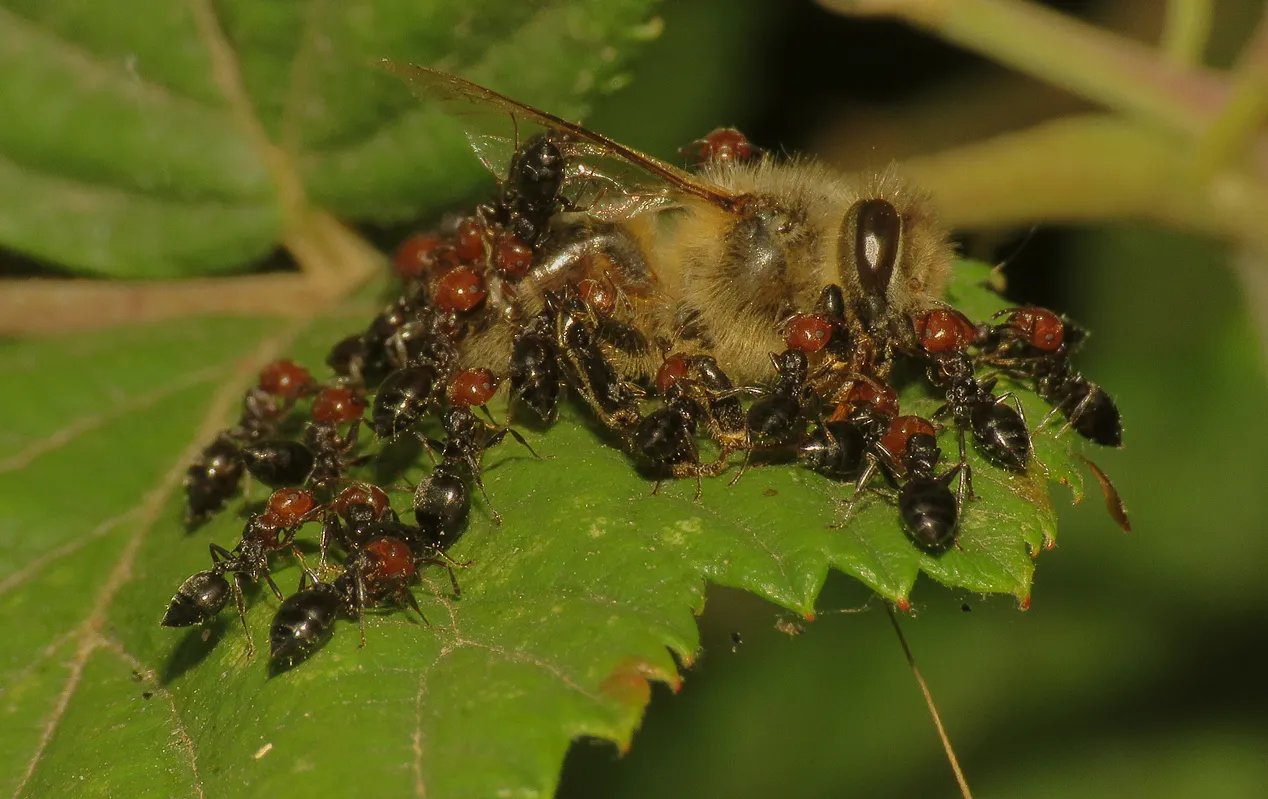
The pieces will end up inside the nest, probably excavated in some rotting piece of driftwood not far from there.
Here you can see some ants attacking and annoying the Curculio venosus weevil.
The beetle was just passing by meaning no harm, but the ants are very zealous when the aphids under their protection look threatened. A bit later the beetle escaped, but in these photographs, the situation looks pretty dramatic. If you enlarge the pictures, you may notice the small, camouflaged aphids, the main reason for this conflict.
The insect in this triptych looks like another, considerably bigger kind of ant ...

... but this is actually a bug from the Nabidae family. At this immature, wingless stage, the Himacerus mirimicoides mimic the black ants. Not only with their shape, but with the postures and movements as well.
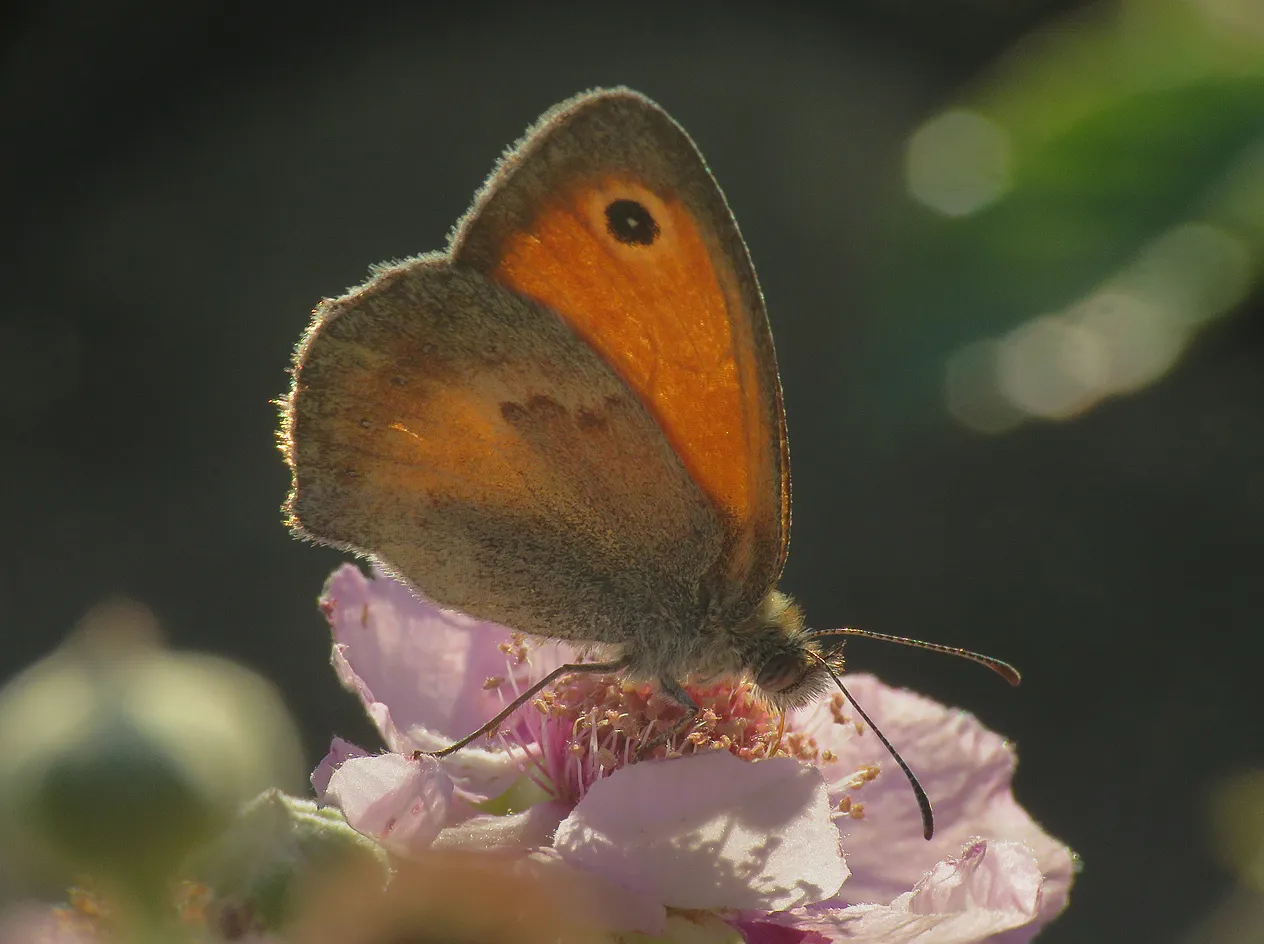
While flying from flower to flower, the butterflies often risk ...
... to end up in the webs built by spiders. In this case, the Neoscona adianta spider has caught the Maniola jurtina butterfly.
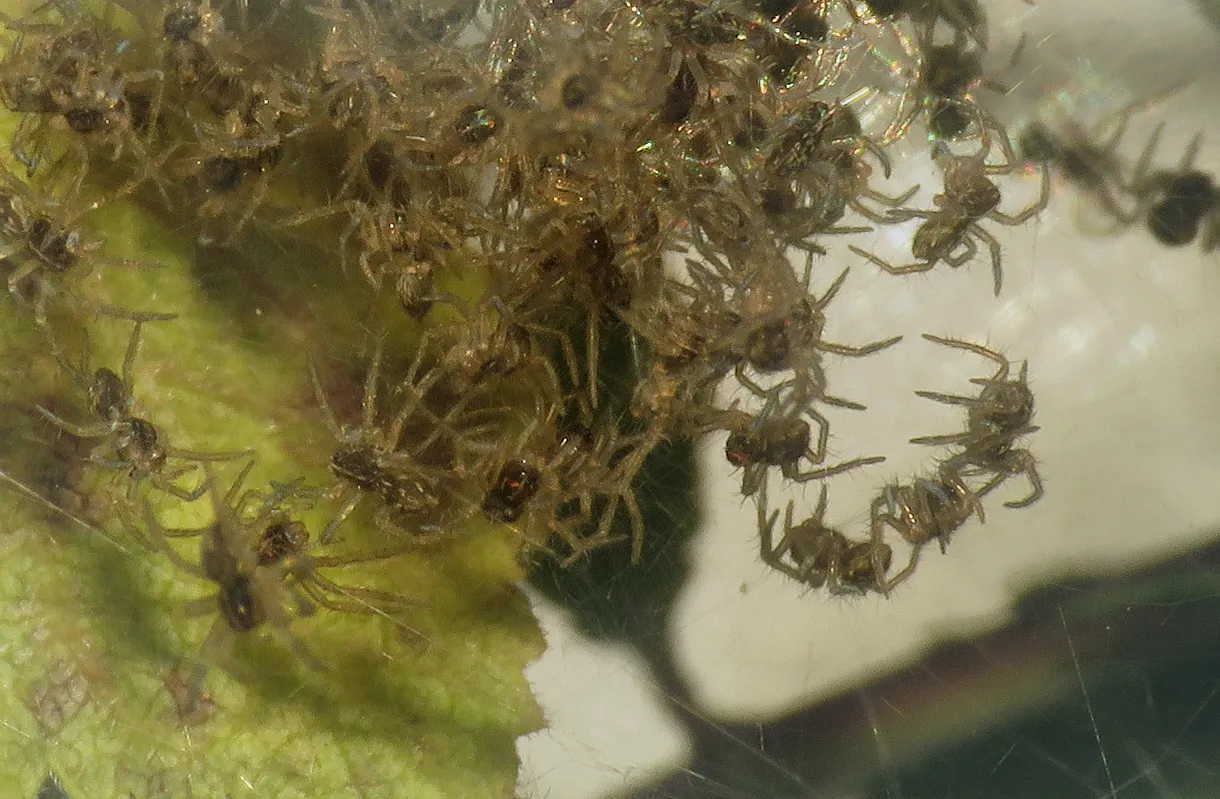
Here you can see a cluster of minuscule spiders ...
... the Pisaura mirabilis spiderlings. They usually form tight spherical clusters, which get dispersed when the spiders are disturbed.
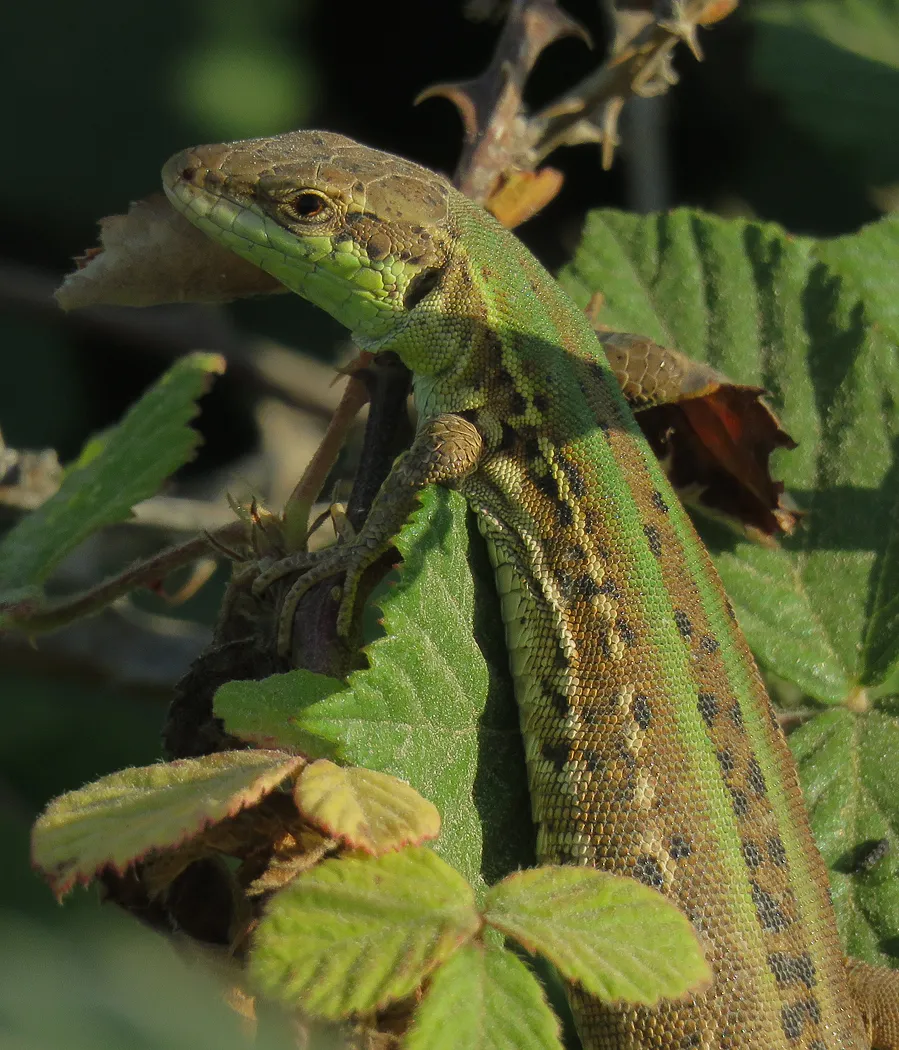
The Podarcis siculus lizards can often be seen among the foliage on the top of the shrubs.
Just like the Eupholidoptera schmidti crickets, they are well camouflaged and hard to notice in this environment.
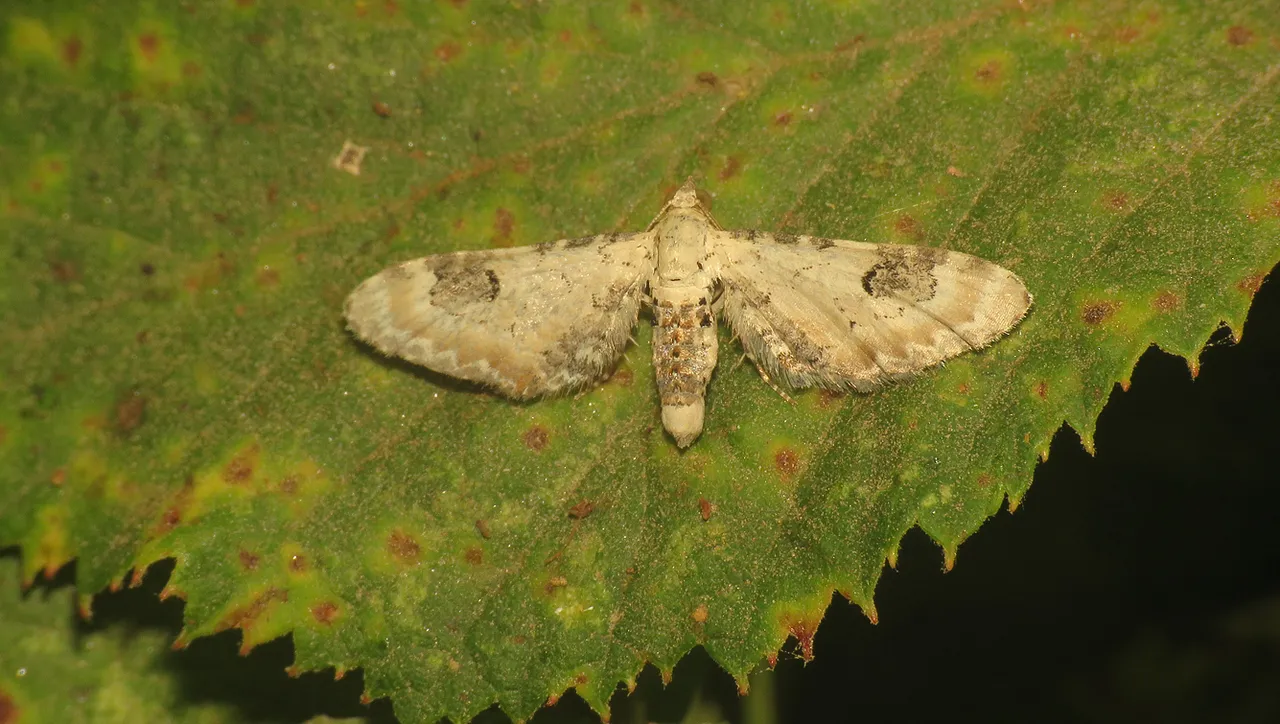
This moth, the Eupithecia centaureata ...
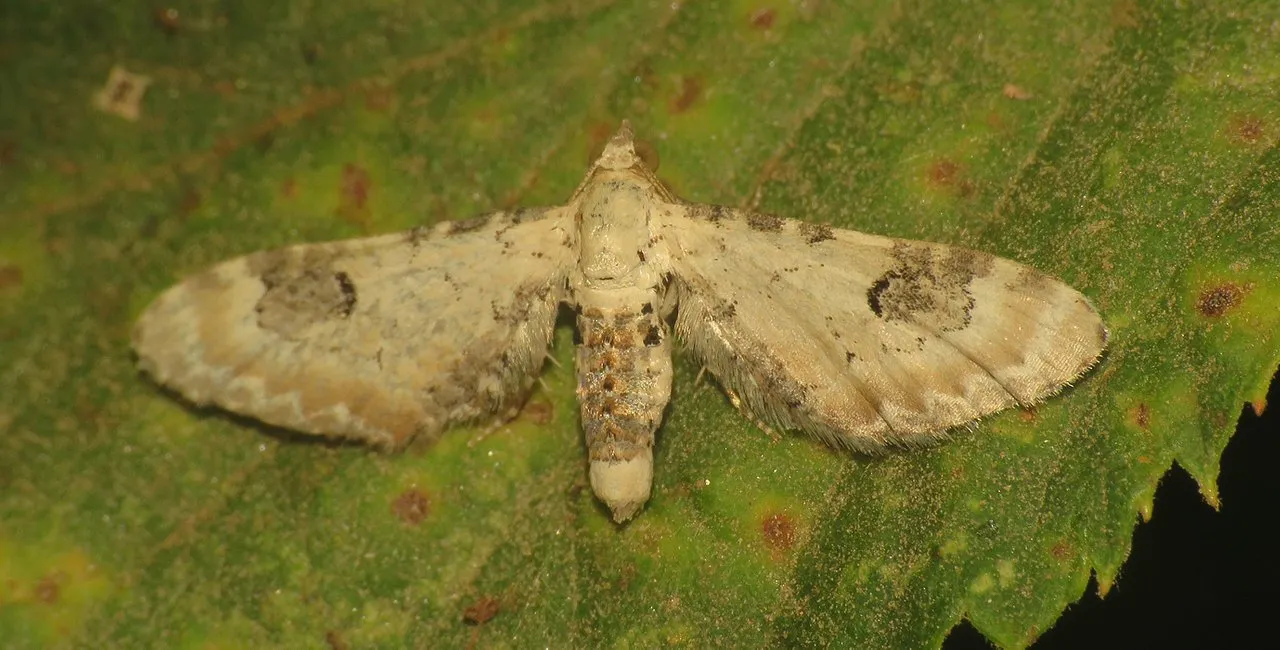
... was also caught while resting. The moth has found a nice, quiet place on the leaf situated deeper in the intricate structure of the shrub.
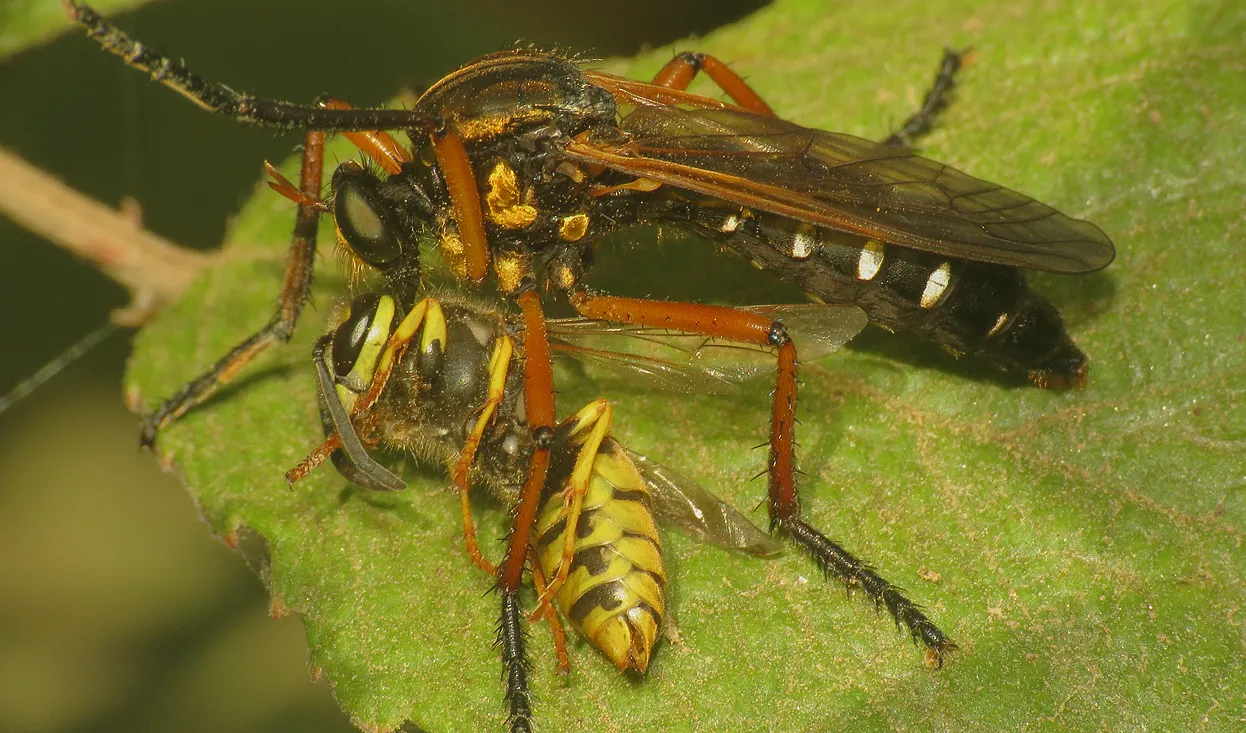
Here you can see a predatory fly with its prey. The Molobratia teutonus robber fly has caught the Vespula germanica paper wasp.
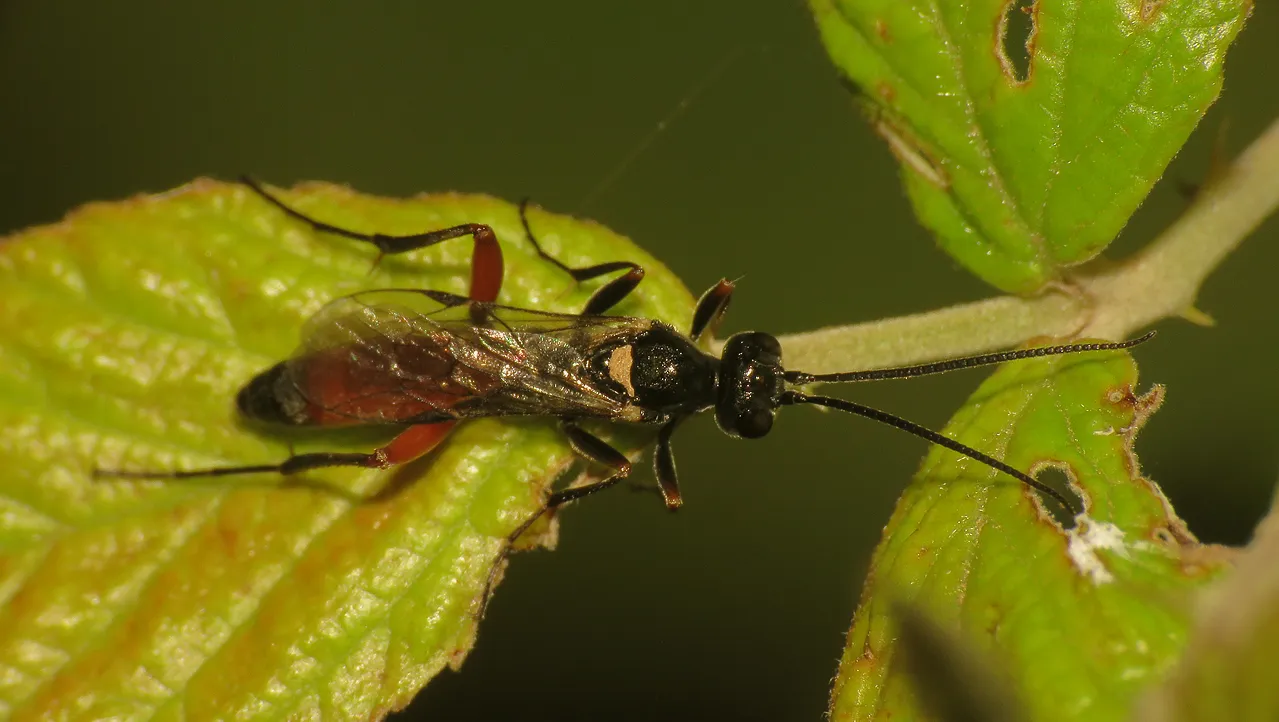
In this final shot, you can take a look at another kind of wasp. Some species from the Ichneumonidae family. I can't tell you the exact species.
AS ALWAYS IN THESE POSTS ON HIVE, THE PHOTOGRAPHS ARE MY WORK.








